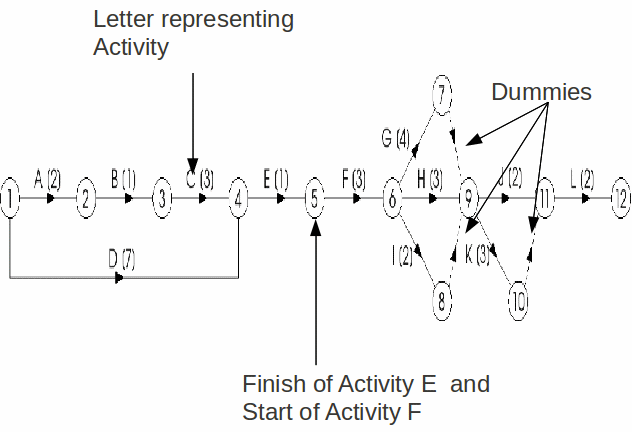An activity network is a graphical representation of activities and events that are needed for a process. There are several rules that have to be obeyed when creating accurate networks.
These rules are:
-
An edge is used to represent an activity.
-
A vertex represents an event, which is the start or end of one or more activities.
-
Events are numbered so that the activity ends at a higher numbered event than it started.
-
Events are numbered so that no activity starts and ends at the same event. An activity can therefore be uniquely identified by its start and end events.
-
In order to avoid ambiguity between activities you must use ‘dummy’ activities. These are activities that have zero length and are inserted to ensure that precedence requirements are met. They allow two activities that ought to have the same start and end events to be distinguished.
-
There should only be one start event and one finish event.
-
The activity detail (or code) and duration are written along the edges.

Using these rules you should be able to create activity networks for any process that involves more than one activity.
